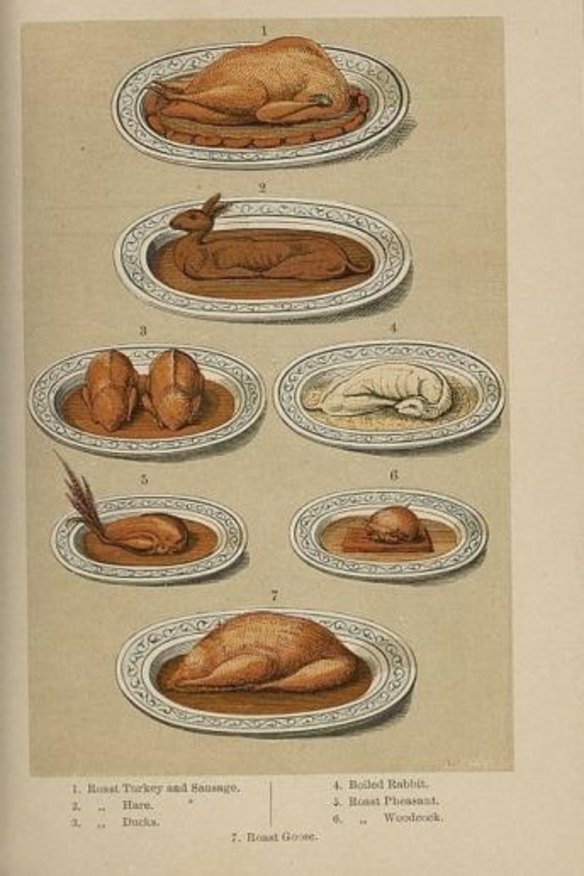Australia's first cookbook: Native fauna fair game on the table

There's nothing like a roasted echidna for breakfast on a mountaintop in Tasmania, especially when you've been out hunting kangaroos for two days.
Well, that's according to Edward Abbott, who records the anecdote (told to him by a foodie friend) in The English and Australian Cookery Book, published in 1864. Among its gems are a recipe for a delightful-sounding dish called Slippery Bob - kangaroo brains battered with flour and water and fried in emu fat. Abbott notes that you'll need "a good appetite and excellent digestion" to eat that one. And there's "Pan Jam", made with kangaroo tails, roasted in the ashes of a fire and scraped out into a pan to be fried with bacon, mushrooms and pepper.
Abbott's book was billed as Australia's first cookbook and the National Library of Australia is celebrating the book's 150th anniversary with a special event on Saturday, September 13.
Historian Barbara Santich will talk about the cookbook at the Kenneth Binns lecture at the National Library on September 13. She is sceptical of Abbott's claim to fame as the first Australian cookbook. "It really was a copy and paste [job]," she says. "There are things that he wrote himself but there were things that were copied from other sources."
And the book is filled with familiar English recipes in the cookbook: bread and butter puddings, boiled fish, roast meats, 10 different kinds of gravy (including "gravy without meat"). There are also somewhat unattainable recipes, such as a guide to cooking ortolan, which Abbott helpfully notes are "birds of a scarce kind. They are procurable in Belgium but are found occasionally in England." There is a section about toasted cheese.
Santich, who is emeritus professor at the University of Adelaide, will be discussing the cookbook and Australia's culinary history with a panel that includes food writer Matthew Evans, Bernard Lloyd and Tony Marshall. She says that while Abbott's may not have been the first properly Australian cookbook, it was still important for drawing attention to indigenous ingredients, particularly game, meat and seafood. "They experimented with these because their rations were monotonous and their rations were scarce," she says. "In Tasmania we've got quite a number of quotes saying that if it hadn't been for the kangaroos and the emus they got, they'd be starving."
She says Abbott, who spent most of his life in Tasmania, was part of "a wave of enthusiasm for the natural resources of the new land". Thanks to Joseph Banks, the first settlers in Australia already knew about the continent's unusual wildlife and flora when they first arrived from England and were thus able to use indigenous herbs to combat scurvy and could identify native fish. They weren't trying (or able) to reinvent cooking - Abbott and other colonists used indigenous animals in place of English meats in traditional recipes. But The English and Australian Cookery Book still casts light on what people were cooking in Australia. "He's part of that wave of experimentalists who were sampling new things," Santich says. "They were trying all the native animals that they could find."
A Culinary History: Australia's First Cookery Book, incorporating the 2014 Kenneth Binns lecture, is on Saturday, September 13, at 2pm at the National Library of Australia. Tickets $20, bookings at eventarc.com. See nla.gov.au/event/7200 for more.
Restaurant reviews, news and the hottest openings served to your inbox.
Sign up- More:
- Restaurant news